Software art is a work of art where the creation of software, or concepts from software, play an important role; for example software applications which were created by artists and which were intended as artworks. As an artistic discipline software art has attained growing attention since the late 1990s. It is closely related to Internet art since it often relies on the Internet, most notably the World Wide Web, for dissemination and critical discussion of the works. Art festivals such as FILE Electronic Language International Festival, Transmediale (Berlin), Prix Ars Electronica (Linz) and readme have devoted considerable attention to the medium and through this have helped to bring software art to a wider audience of theorists and academics.
In music, montage or sound collage is a technique where newly branded sound objects or compositions, including songs, are created from collage, also known as montage. This is often done through the use of sampling, while some playable sound collages were produced by gluing together sectors of different vinyl records. In any case, it may be achieved through the use of previous sound recordings or musical scores. Like its visual cousin, the collage work may have a completely different effect than that of the component parts, even if the original parts are completely recognizable or from only one source.

Electronic art is a form of art that makes use of electronic media. More broadly, it refers to technology and/or electronic media. It is related to information art, new media art, video art, digital art, interactive art, internet art, and electronic music. It is considered an outgrowth of conceptual art and systems art.
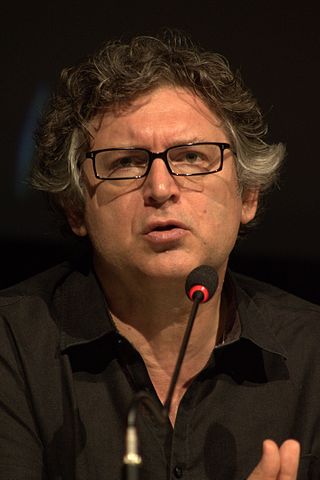
Michel Onfray is a French writer and philosopher with a hedonistic, epicurean and atheist worldview. A highly-prolific author on philosophy, he has written over 100 books. His philosophy is mainly influenced by such thinkers as Nietzsche, Epicurus, the Cynic and Cyrenaic schools, as well as French materialism. He has gained notoriety for writing such works as Traité d'athéologie: Physique de la métaphysique, Politique du rebelle: traité de résistance et d'insoumission, Physiologie de Georges Palante, portrait d'un nietzchéen de gauche, La puissance d'exister and La sculpture de soi for which he won the annual Prix Médicis in 1993.

André Pieyre de Mandiargues was a French writer born in Paris. He became an associate of the Surrealists and married the Italian painter Bona Tibertelli de Pisis. He was a particularly close friend of the painter Leonor Fini.

Joseph-François Kremer is a French composer, conductor, cellist and musicologist.
Thierry de Duve is a Belgian professor of modern art theory and contemporary art theory, and both teaches and publishes books in the field. He is an art critic and curates exhibitions.
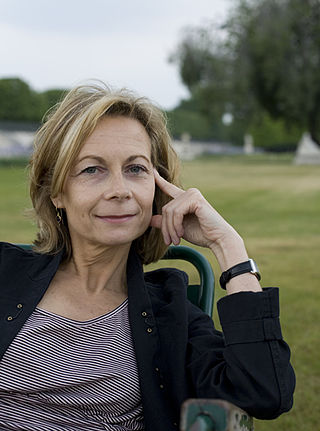
Catherine Perret is associate professor of modern and contemporary aesthetics and theory at Nanterre University. She obtained her Ph.D. in philosophy and is known for her work on Walter Benjamin, most notably by her book Walter Benjamin ou la critique en effet. Dr. Perret was the director of the Art of Exhibition Department at Paris X. She served as a program director at the Collège International de Philosophie from 1995 to 2001. She is a recipient of the prestigious title Chevalier des Palmes académiques. She collaborated with Bernard Stiegler in Ars Industrialis. Dr. Perret is currently responsible for the Centre de recherche sur l'art, philosophie, esthétique at Paris X.
Edmond Couchot was a French digital artist and art theoretician who taught at the University Paris VIII.

Pascal Dombis is a digital artist who uses computers and algorithms to produce excessive repetition of simple processes.
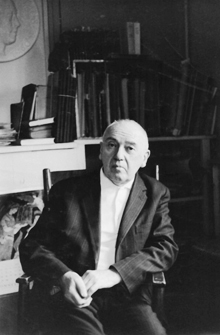
Jean Grenier was a French philosopher and writer. He taught for a time in Algiers, where he became a significant influence on the young Albert Camus.
Hubert Damisch, was a French philosopher specialised in aesthetics and art history, and professor at the École des Hautes Études en Sciences Sociales (EHESS) in Paris from 1975 until 1996.
Virtuality is a concept in philosophy elaborated by French thinker Gilles Deleuze.
Peter Szendy is a French philosopher and musicologist. He is the David Herlihy Professor of Humanities and Comparative Literature at Brown University.
Charles Lalo was a French writer on aesthetics.
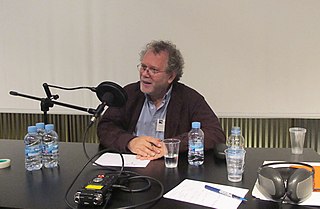
Georges Didi-Huberman FBA is a French philosopher and art historian.
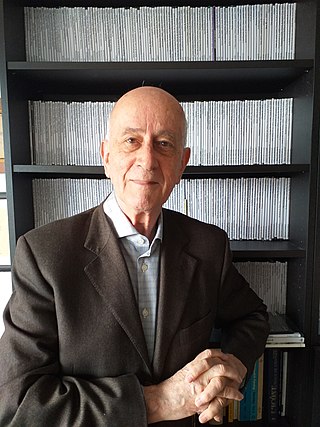
Jacques Aumont is a French academic and writer on film theory.
Jean Louis Schefer was a French writer, philosopher, art critic, and theoretician of cinema and image.
Max Loreau was a 20th-century Belgian philosopher, poet and art critic
Éditions Galilée is a French publishing house located in Paris, and was founded in 1971 by Michel Delorme. It specializes in philosophy, French literature, arts and human sciences. Focusing on the deconstructionist thought of Jacques Derrida, Galilée also publishes works on postmodernist thought.









